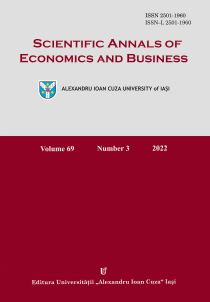Inflation – Unemployment Dilemma. A Cross-Country Analysis
Inflation – Unemployment Dilemma. A Cross-Country Analysis
Author(s): Cristian Constantin Popescu, Laura Diaconu (Maxim)Subject(s): Economy, National Economy, Economic policy, Human Resources in Economy
Published by: Editura Universităţii »Alexandru Ioan Cuza« din Iaşi
Keywords: unemployment-inflation relationship; Phillips; Friedman-Phelps; G7 countries;
Summary/Abstract: According to Phillips’ study, there is an inverse link between inflation and unemployment. The major consequence of these imbalances lies in authorities’ ability to correct one of them, usually the unemployment, by influencing the components of the aggregate demand. Phillips' opinion is later countered by Friedman’s principle of currency neutrality. Together with Phelps, Friedman argues that, in the long run, the Phillips curve is vertical and any attempt to lower the unemployment below the natural rate leads to a simultaneous rise in unemployment and inflation. This paper aims to analyze the impact of the economic policy measures on the evolution of inflation and unemployment in the G7 countries, starting from the monetary criticism regarding the inefficiency of monetary impulses. In order to achieve this purpose, the developed econometric analysis tries to identify the existence and the direction of the nexus between variables, both in the short and long term, by using causality and cointegration methods, such as Granger, Granger-Wald and Johansen tests. Our findings support Phillips model on the short run, indicating that there is an inverse link between the inflation rate and the unemployment rate in the G7 states, during the analyzed period. However, on the long run, our results indicate that inflation and unemployment can coexist, fact that allows us to agree with the monetarist theories.
Journal: Scientific Annals of Economics and Business
- Issue Year: 69/2022
- Issue No: 3
- Page Range: 377-392
- Page Count: 16
- Language: English

